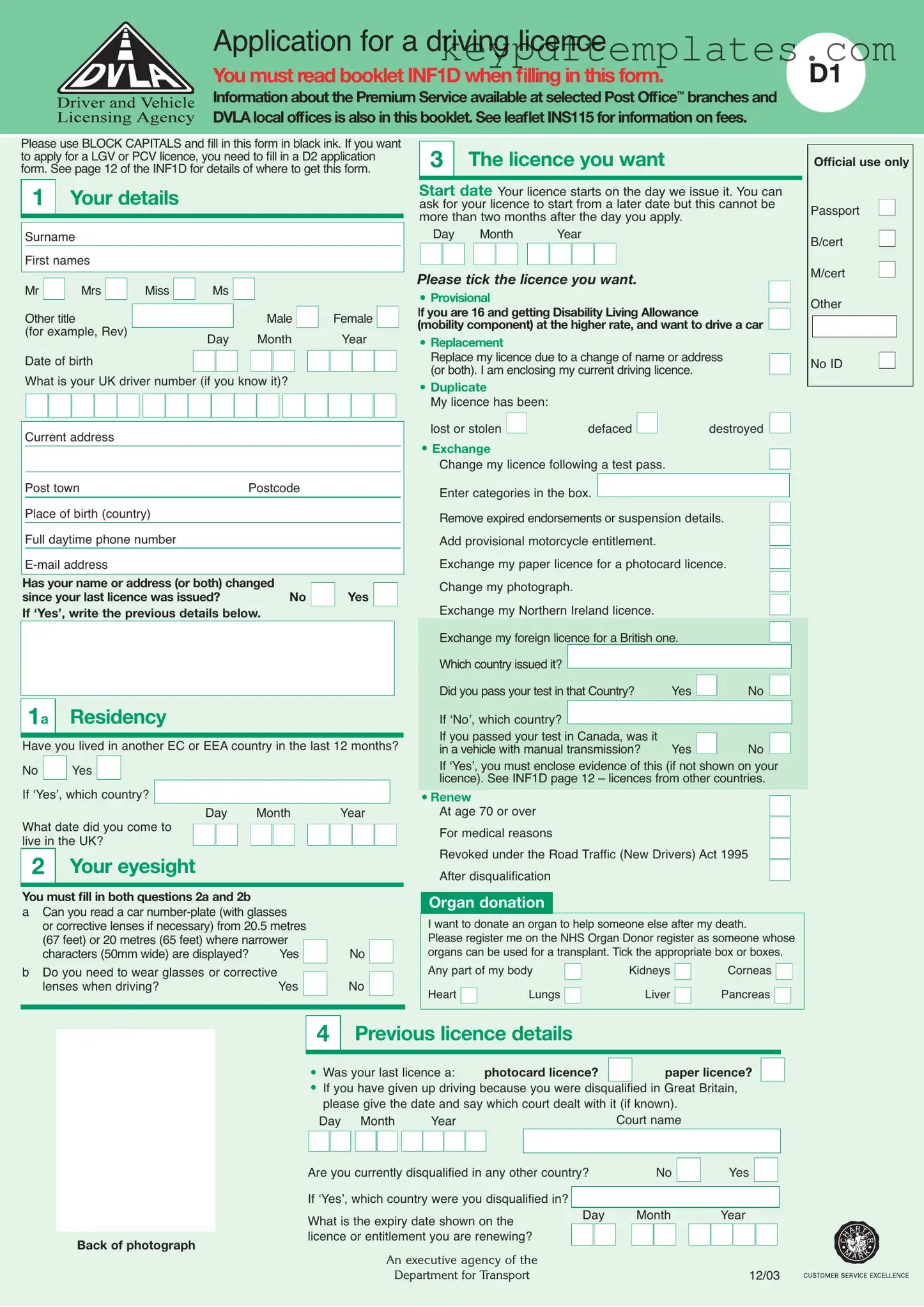Get D1 Dvla Form
The D1 DVLA form is an application used in the United Kingdom for individuals seeking to obtain or renew a driving licence. Completing this form requires careful attention to detail, as it includes personal information, residency status, eyesight requirements, and health disclosures. It is essential to follow the guidelines provided in the accompanying booklet, INF1D, to ensure a smooth application process.
Modify Document Online
